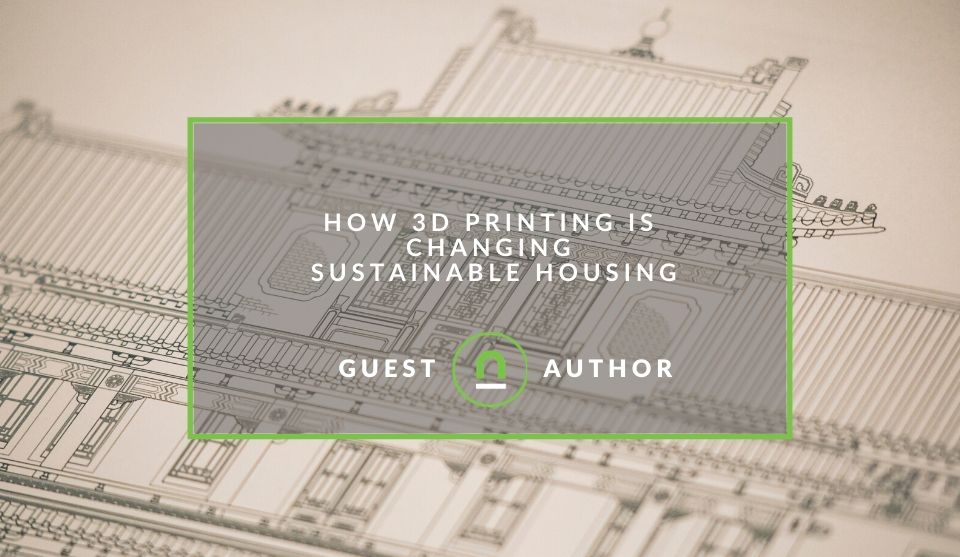Recent posts

nichemarket Advice
Why Video Production Companies Still Outshine AI
24 December 2025

Press Releases
Where You Can Find International Remote Jobs For South Africans
23 December 2025

Money Talks
Why Cross-Border Payments Are Slow, Tedious, and Expensive
17 December 2025

Money Talks
The Rise Of Trading Platforms In South Africa
16 December 2025
Popular posts
Extravaganza
Trending Music Hashtags To Get Your Posts Noticed
24 August 2018
Geek Chic
How To Fix iPhone/iPad Only Charging In Certain Positions
05 July 2020
Extravaganza
Trending Wedding Hashtags To Get Your Posts Noticed
18 September 2018
Money Talks
How To Find Coupons & Vouchers Online In South Africa
28 March 2019
How 3D Printing Is Changing Sustainable Housing
13 April 2020 | 0 comments | Posted by Anda Warner in Constructive Criticism
The construction industry has been progressing unimpressively slowly towards the much-needed sustainable housing. Part of this unfortunate trend has been the lack of workable green management interventions by contractors and homeowners.
Construction regulatory authorities have also not been able to sufficiently legislate against the vast amount of waste that the construction industry generates every year or to hold construction companies accountable for their unsustainable approach to construction.
Thanks to disruptive technologies such as 3D printing, however, there is hope that the elusive dream of sustainable housing will soon be realized. This technology is gradually revolutionizing processes through which products- houses included- are designed and manufactured.
By changing the structure of supply chains, 3D printing will potentially make the construction industry leaner and more sustainable.
What is 3D printing?
3D printing is a computerized process that converts 3-dimensional digital objects to 3-dimensional solid objects. The process is also known as additive manufacturing because the solid 3D printed objects are created in a somewhat “additive” process. Layers of the constructing material are laid down successively until the object’s desired size and shape are achieved.
3D printing enables constructors to create complex shapes and designs that traditional construction methods cannot while using less material, saving on cost, and attain sustainable housing.
Having a good house with all of the necessary kitchen tables, ready to assemble cabinets, and other essential appliances have now become a must. For anyone planning a home remodelling project, 3D printing can provide a potentially environmentally friendlier alternative to traditional construction methods.
Here are three proven ways of how 3D printing is changing sustainable housing and making things easier on companies and homeowners:
1. Reduced waste
Transportation logistics in the construction industry are structured in a manner that pollutes our environment with unwanted waste. 3D printing has the potential to remedy this in three ways:
- 3D printing can be done on-site and eliminate the need for material transportation. That means lesser debris in the environment because no materials will get damaged on transit.
- Materials used in 3D printing do not need as much engineering and reinforcement as it is the case with traditional construction, primarily because 3D printing materials aren’t made to withstand transportation stress. That means lower construction costs and lesser materials used.
- On-site 3D printing eliminates the need for tedious post-assembly processes. Everything is tailor-made for the project at hand; the raw material is directly moulded into a construction.
2. Enabling the use of sustainable and environmentally-friendly materials
3D printing allows constructors to use a variety of sustainable and environmentally-friendly materials, and to recycle solid waste. While plastic is the most commonly used material for 3D printing, the two plastics used in this method (ABS and PLA) are more sustainable than ordinary plastic.
3D printers can recycle ABS despite it being a petroleum-based material. When done with regularity, that would save the world from plastic pollution. PLA, on the other hand, is made from plants, making it more sustainable than most construction materials out there.
3D printing has also made significant contributions to the improvement of flooring materials. 3D printers can make flooring tiles from vinyl, ceramic, rubber, and linoleum, among other classy and modern elements. All these flooring options are very sustainable. Rubber, for example, is extracted from Hevea trees through an environmentally-friendly extraction process.
3. More efficient installation of pipes and electricity
Traditional construction methods necessitate the labour-intensive installation of heating systems, plumbing, insulation, and electricity. All these installations are done on-site and can be pretty pricey. With 3D printing, however, all the needed installations can be printed in 3D and integrated into the construction process.
Installing electricity is also effortless. And because their walls are hollow, 3D printed houses are sufficiently insulated right from the onset.
When speaking of hollow walls, it is pretty effortless to install grow lights in your grow area when you are dealing with hollow as opposed to thick concrete walls. Achieving your needed temperature for optimal indoor plant growth is also easier when the walls are already adequately insulated.
Shortly, we might even start seeing 3D-printed grow rooms as the technology evolves, and as more people embrace its benefits.
Conclusion
While 3D printing has brought incredible improvements to modern construction, there is still a long way to go if the industry is to become entirely sustainable. We have not yet achieved sustainable living until when we will be able to print large numbers of houses using 3D printers.
Tell us your story
Would you like to write for nichemarket just like Anda has? Find out how to submit a guest post, and when you're ready, you can contact us.
Are you looking to promote your business?
South African home renovation businesses can create your free business listing on nichemarket. The more information you provide about your business, the easier it will be for your customers to find you online.
Registering with nichemarket is easy; all you will need to do is head over to our sign up form and follow the instructions. If you require a more detailed guide on how to create your profile or your listing, then we highly recommend you check out the following articles.
Recommended reading
If you enjoyed this post and have time to spare, why not check out these related posts and dive deeper down the rabbit hole that is homeownership.
- Save Money To Buy A House
- How To Start House Flipping For Profit
- How To Turn Your Home Into A Smart Home
- How To Prepare For A Home Renovation
- Should You Buy or Rent a Condo?
- Tips To Determine The Market Value of Homes
Tags: 3D Printing, Guest Post
You might also like
Where You Can Find International Remote Jobs For South Africans
23 December 2025
Posted by Mia Stewart in Press Releases
Want to find international remote jobs for South Africans? Look no further, in this breakdown we look at your options so you can start applying for W...
Read moreThe Difference Between SOAP Notes and DAP Notes
02 December 2025
Posted by Che Kohler in Doctors Orders
A look at SOAP format, which remains the classic choice for healthcare professionals, while DAP notes offer more flexibility for mental health docume...
Read more{{comment.sUserName}}
{{comment.iDayLastEdit}} day ago
{{comment.iDayLastEdit}} days ago
 {{blogcategory.sCategoryName}}
{{blogcategory.sCategoryName}}

